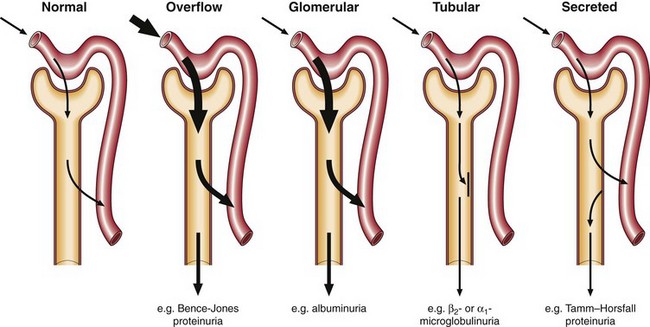Proteinuria
Mechanisms of proteinuria
Ways of measuring proteinuria
Proteinuria is detected and quantified in a variety of ways.
Dipstick urinalysis
The procedure for dipstick urine testing is shown in Figure 16.2 on page 32. Dipsticks are commercially available disposable strips, impregnated with coloured reagent blocks, which are immersed in urine. The reagents in each block react with a specific component of urine in such a way that the block changes colour if the component is present. Protein is just one of several components tested for; others include glucose, blood and bilirubin.


